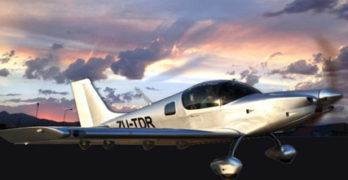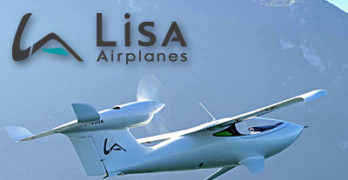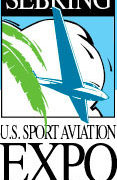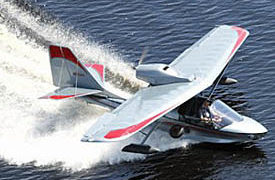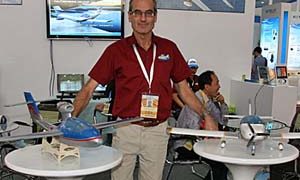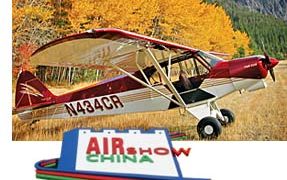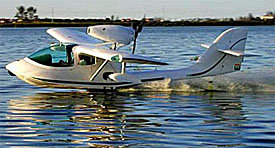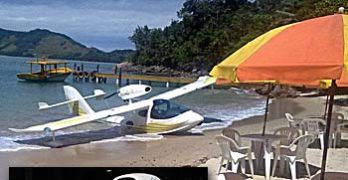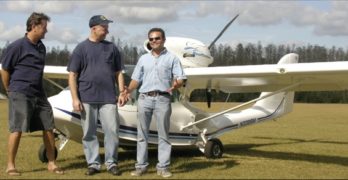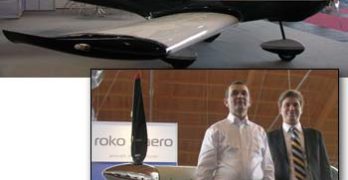Taildraggers may be among the least understood and most feared aircraft available in the LSA space … or for that matter throughout general aviation. While we have many good choices that I’ll list below, I have nonetheless heard from many readers or airshow visitors that they are uncertain about their operation of an aircraft that has no nosewheel. If you have no taildragger skills, you’ll also find it a challenge to get proper flight instruction in a “standard” aircraft. For those seeking new skills in flying, however, taildraggers may provide high satisfaction. Most who have crossed the barrier to taildragging subsequently look very fondly at such aircraft, seeing a sleeker yet gutsier, more rugged appearance. Of course, nosewheels dominate general aviation as they can be easier to land, especially in crosswinds, but once you learn the lesson of “happy feet” — or keeping your feet active on the rudder pedals throughout approach and touchdown — you may always yearn for more taildragger time.
Search Results for : mermaid
Not finding exactly what you expected? Try our advanced search option.
Select a manufacturer to go straight to all our content about that manufacturer.
Select an aircraft model to go straight to all our content about that model.
Amazing LSA Seaplanes: Lisa’s Supersleek Akoya
We just passed September 1st and that date is significant in the LSA universe. It is the day, ten years ago, that the Sport Pilot & Light-Sport Aircraft rule we have been celebrating all summer officially became part of the Federal Aviation Regulations (FARs). If you’re thinking, “Hey, I thought it was announced in the summertime, at AirVenture!” … you’re correct. It was, but that was just the administrator’s public relations timing to get the biggest bang for the buck, at Oshkosh. As we continue the tenth anniversary celebration — looking back on the first decade — we see the astounding development of 136 models of LSA, more than one every month for ten years running. This profusion of models runs the length and breadth of aviation, from fixed wing, three axis airplanes to powered parachutes to trikes to motorgliders and from less than $30,000 to over $200,000. I fully expect designers to continue pushing the envelope in every direction but one facet of LSA development seems as energized as a Saturn V moon rocket: LSA seaplanes.
Last News Rush Before Sebring 2014 …
People are starting to arrive in Florida. Today, we had a pleasant lunch conversation with Dynon’s president Robert Hamilton. He observed that Dynon enjoyed their best year ever in 2013 and they continue bringing new avionics innovations at modest prices. Fellow Dynon staffer Kirk Kleinholz was in the state even earlier traveling around offering tech support. Great work, Dynon-ers! As we all enter the last-minute rush to head to the tenth Sebring, a few news items arrived and I’ll run through them so you have some idea of what will be present at the LSA event.
Progressive Aerodyne announced they received FAA acceptance for the Elite version of their Searey Amphibious LSA. Searey Elite is mightily powered with a Rotax 914 turbocharged engine; you can see a short video of it launching in this article. “This stylish aircraft offers many advanced features such as a large sliding canopy that can remain open while flying.
Seaplane Tsunami — Water-Borne Flying Fun
Once upon a time, in the early days of Light-Sport Aircraft, way back in 2006 and 2007, new LSA models were being introduced at the torrid pace of two, three, even four per month. Aviation had no prior design outpouring to compare. The rate of development had to slow — such a pace is not sustainable — and it did. Yet the young industry continued on to the astonishing sum of 131 models and it ain’t over yet. Meanwhile, though, a new tsunami is building within the LSA sector. I’ve written about a wave a new seaplanes and as summer 2013 approaches, a tour of the many choices may help guide interest of seaplane enthusiasts.
Current Seaplanes (distinguished from float-equipped land planes *) include FAA-accepted SLSA models: Mermaid, SeaMax, SeaRey, and Freedom. At present all are being offered and have some measure of U.S.
Airshow China in Zhuhai … a Photo Essay
Last month the southern China city of Zhuhai hosted a large collection of aircraft at Airshow China. We’ve been hearing about this once-closed country in matters of aviation so often, I thought it would be something different to show a collection of photos taken by my LAMA Europe colleague, Jan Fridrich. He works for the Czech Light Aircraft Association and you know his name as the man who does the hard work to gather figures for our regular LSA market surveys.
Another associate of mine, Will Escutia, one of the new owners of Quicksilver Aeronautics, also traveled to China recently. Visiting dealer prospects in the north of the large country Will reported that he sees four main forces driving the opening of aviation in China: (1) airspace below 3,000 meters is opening to civilian aircraft; (2) high interest in flying follows that airspace opening; (3) government is concerned about their economy and aviation is seen as helpful; (4) entrepreneurs are jockeying to take early advantage of the burgeoning market.
Mid-November 2012 LSA News Wrap
Good to Go in China Things are happening in China. “So, what’s new,” you say? “We’ve been hearing about China for months.” Things may move slowly in China but this week, Airshow China is happening in the southern city of Zhuhai and my colleague, Jan Fridrich is present. He reports that some LSA are displayed including Triton’s Mermaid and SC3D (based on the SportCruiser), Flight Design’s CTSW, Colyaer’s Freedom, and some other aircraft he is working to identify. Watch for a followup article. Triton is the new China-based factory run by Chip Erwin. ••• LSA leader CubCrafters gained Type Certificate approval in China for their Part 23-certified Top Cub. General Manager Randy Lervold said they have taken no steps with the LSA models but that they expect to pursue that in the future. Meanwhile, though the company announced the sale of two Carbon Cubs in Europe, they are taking a similarly measured approach using Permit to Fly privileges for now.
LSA Seaplane Invasion …Can It Happen?
What’s going on out in the marketplace? More than any time since the launch of Light-Sport Aircraft in 2004, I have not observed such a frenzy of activity for a particular niche, this time for LSA seaplanes. Next season, in 2013, we could see no less than nine entries; three brand new and that count does not include any LSA equipped with floats, possibly adding several more. Yet some major potholes appear in the runway… or perhaps that should be waves sloshing over the bow.
One entry is a return of a LSA seaplane previously seen in the USA as the Freedom S100 (SLSA List #44) yet can it reenter the market without a full FAA audit? See Update at end. A new agency directive with the catchy name 8130.2G CHG 1 may require a FAA visit to Spain but who knows when that might occur, given the likelihood of an FAA budget cut through the political process known as sequestration, part of the so-called “fiscal cliff” the mainstream media drones on about endlessly.
Seaplane LSA Fun Flying… the Season Approaches
Winter will soon yield to spring and summer, that time of year when flying from water becomes the delight of many pilots who have sampled this pleasure. Competing for their purchase in the LSA space, we have the FK Lightplanes Floatplane, FPNA A-22 Cape Town, and Legend AmphibCub. Other entries include SeaRey (close to declaring ASTM compliance); Mermaid (production plans uncertain), Icon (still in development), Colyaer Freedom (no U.S. representative), plus two trike amphibs with SLSA status (the Krucker Cygnet and Ramphos Trident). *** All this leaves out the SeaMax, which may actually be the strongest player among present SLSA amphibians. Logging its 10th year in 2009 AirMax has produced 98 SeaMaxes for worldwide sale. At $140,000, SeaMax once seemed rather expensive though today, many high-end SLSA command such prices. *** Consider the general appeal of the seaplane or floatplane compared to a land-only flyer.
AirMax SeaMax, Elegant Engineering
Let’s consider light amphibious aircraft – the boathull variety, not floatplanes
– but including both freshly designed, fully built light sport aircraft
along with kit aircraft born of the ultralight heritage.
In the last year, the exceedingly handsome Icon A5 has made quite a splash, literally
and figuratively. However, the A5 is more than a year away from first deliveries
and an order placed today might not be delivered until 2011 or later. Another LSA
amphibian called the Mermaid was designed and introduced by Czech Aircraft
Works of SportCruiser fame. Although five are available in the country, sales have
yet to take off.
Another popular American seaplane, the SeaRey, is moving toward ASTM
approval but remains a kit that asks several hundred hours of a builder’s time. The
simpler and faster-build Aventura models also remain available; this design has
been on the market for many years. Either kit is less costly than a fully built aircraft,
but all seaplanes have loftier price tags to cover their ability to operate on land
or water.
Roko NG 4 LSA Preparing to Cross the Atlantic
The troubles of Czech Aircraft Works (CZAW) in their titanic battle with financier Slavia Capital are known to some readers. Despite this challenge the American-run, Czech-based company increased the fleet of their SportCruisers by 69% in 2008 (a notable achievement given the terrible economic conditions). *** One of CZAW’s key people didn’t stay through the war that ensued between company management and money people. His name is Milan Bristela and he is a talented designer who preferred to focus on airplane development rather than corporate politics. His disappearance from the payroll of CZAW became clear after he launched his own aircraft in December 2007. The NG 4 UL is presently selling in Europe and the NG 4 LSA will come to America, probably by Oshkosh 2009. *** NG 4 bears a clear resemblance to the SportCruiser, which design counted Milan as a key developer. Roko’s design brings changes to differentiate the product and first flew in mid-2008.


